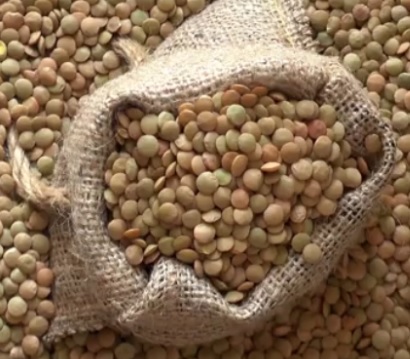Lentil Flour is a flour made from grinding lentils, a nutrient-rich legume. It is a versatile and nutritious ingredient used mainly in the food industry for making gluten-free, vegan, and high-protein products. Lentil flour is also a good source of fiber, minerals, vitamins, and antioxidants.
Chemical Composition and Structure
Lentil flour is composed primarily of:
- Proteins: Lentils are an excellent source of plant-based proteins, which make up a significant portion of the flour.
- Carbohydrates: Lentil flour contains complex carbohydrates, which provide long-lasting energy.
- Fiber: It is rich in dietary fiber, which aids digestion and helps maintain stable blood sugar levels.
- Fats: It contains healthy fats, particularly unsaturated fatty acids.
- Minerals and Vitamins: Lentil flour is a good source of iron, magnesium, potassium, B vitamins (like vitamin B6 and folic acid), and antioxidants.
Physical Properties
- Appearance: Lentil flour is typically yellow to light brown, depending on the type of lentil used.
- Odor: It has a characteristic legume odor, which may vary slightly based on the lentil variety.
- Solubility: It is not water-soluble but can easily be incorporated into recipes when mixed with liquids.
- Texture: Lentil flour has a fine but slightly coarse texture compared to other flours, such as wheat flour.
Benefits and Functions
- Rich in plant-based proteins: It is an excellent source of protein, making it a valuable ingredient for vegetarian and vegan diets.
- Gluten-free: Being free from gluten, it is ideal for those with celiac disease or those following a gluten-free diet.
- Enhances nutritional value of dishes: The high percentage of proteins, fiber, and micronutrients adds significant nutritional value to dishes.
- Digestive health: The fiber in lentil flour helps regulate the digestive system and prevent constipation.
- Helps stabilize blood sugar levels: The complex carbohydrates and fiber contribute to slow digestion and gradual sugar release into the bloodstream.
Applications
Food Industry
- Gluten-free products: Lentil flour is used in gluten-free baked goods like bread, pancakes, muffins, and cakes.
- Meat alternatives: It is used in plant-based burgers, meatballs, and other vegetarian meat alternatives due to its protein content.
- Soups and stews: It can be used to thicken soups and stews, adding nutritional value.
- Snacks: It is also used in savory or crispy snacks like chips or crackers made from lentils.
Cosmetics
- Scrubs and face masks: Lentil flour can be used as a natural exfoliant in skincare treatments.
- Moisturizing products: Due to its protein and mineral content, it can be included in formulations to nourish and hydrate the skin.
Environmental and Safety Considerations
- Biodegradability: Lentil flour is fully biodegradable and does not have a negative environmental impact.
- Sustainability: Lentils are an environmentally friendly crop, requiring less water compared to other legumes and grains, making lentil flour a sustainable choice.
Lentil: studies and insights
References_________________________________________________________________
(1) Ganesan K, Xu B. Polyphenol-Rich Lentils and Their Health Promoting Effects. Int J Mol Sci. 2017 Nov 10;18(11):2390. doi: 10.3390/ijms18112390.
(2) Żuchowski J, Rolnik A, Adach W, Stochmal A, Olas B. Modulation of Oxidative Stress and Hemostasis by Flavonoids from Lentil Aerial Parts. Molecules. 2021 Jan 18;26(2):497. doi: 10.3390/molecules26020497.
(3) Moravek D, Duncan AM, VanderSluis LB, Turkstra SJ, Rogers EJ, Wilson JM, Hawke A, Ramdath DD. Carbohydrate Replacement of Rice or Potato with Lentils Reduces the Postprandial Glycemic Response in Healthy Adults in an Acute, Randomized, Crossover Trial. J Nutr. 2018 Apr 1;148(4):535-541. doi: 10.1093/jn/nxy018.
![]() Lentil Flour
Lentil Flour 

